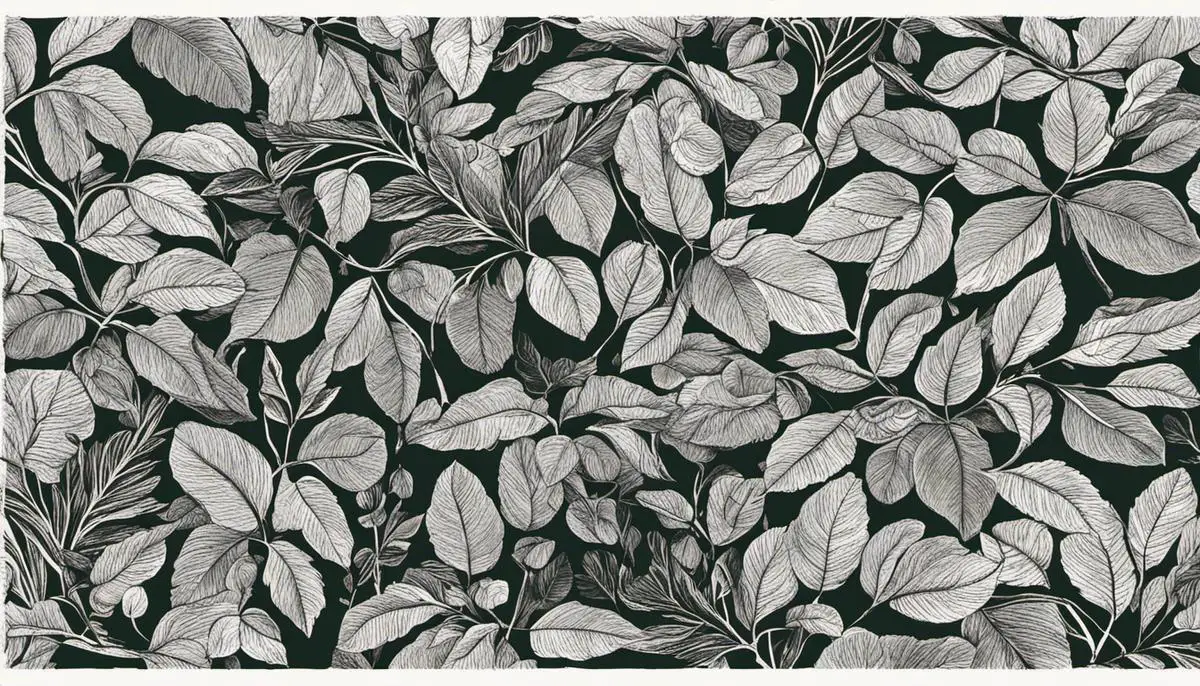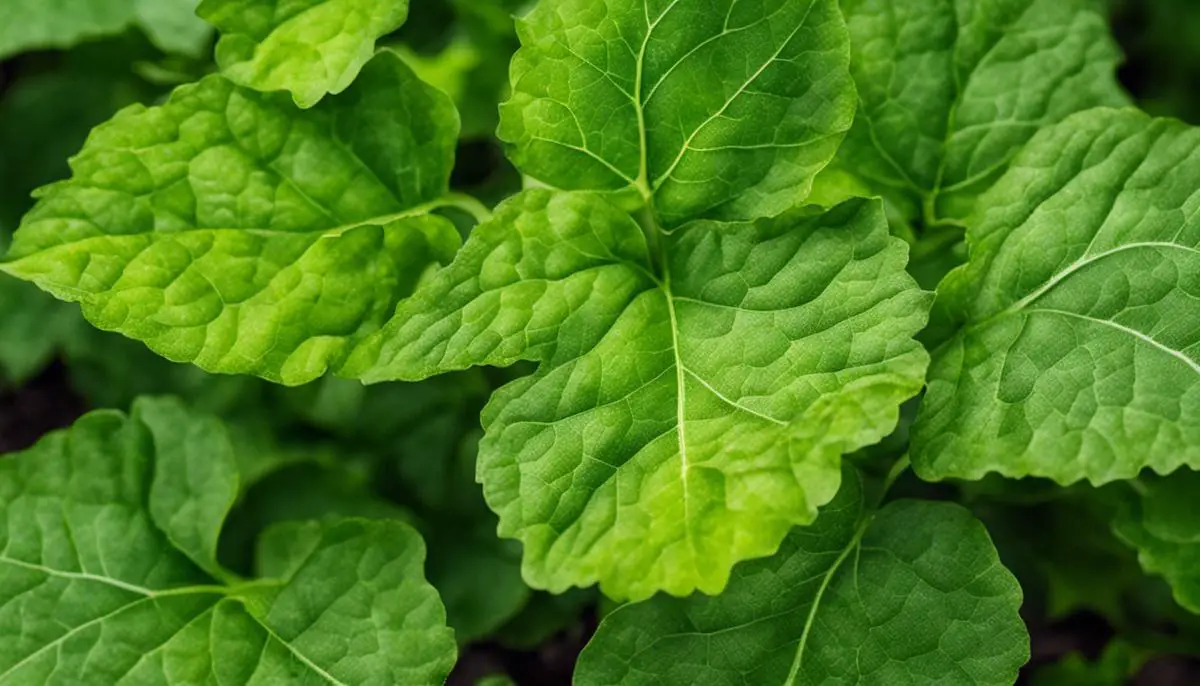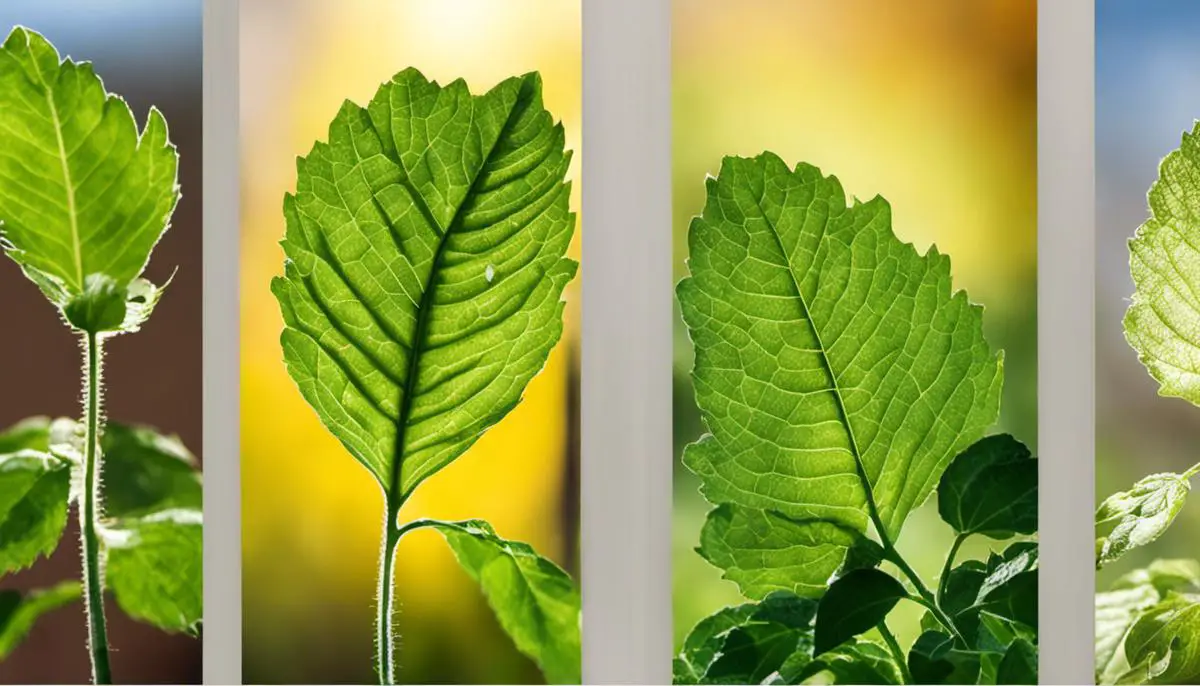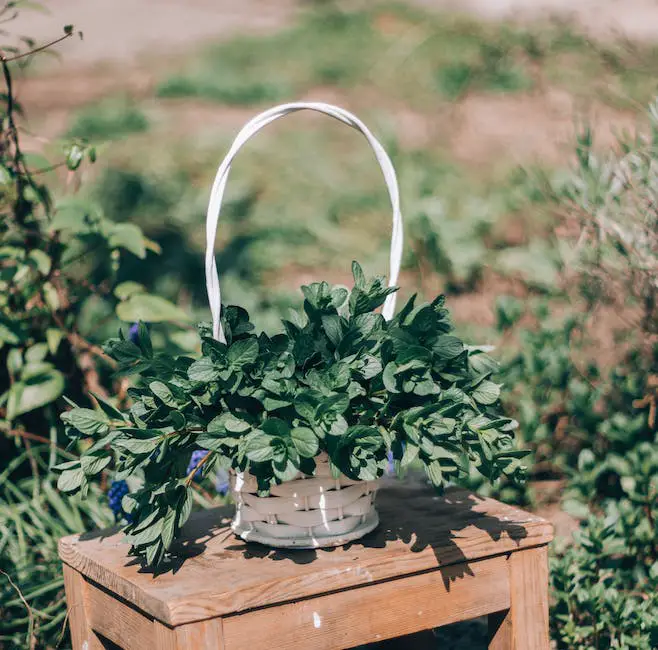When ambling through a thriving garden or farm, a patch of browning potato leaves can be a disheartening sight. Often signaling a deeper issue within the plant system, these unsightly brown spots or patches can transform a once lush and vibrant potato field into an alarming concern.
As a potato enthusiast or a farmer, understanding the causes, symptoms, and treatments for this common potato problem can aid in preserving the health and longevity of your crop. In this piece, we delve deep into identifying the various symptoms, uncover the common factors causing this phenomenon, investigate the role of pests and diseases, and suggest preventive measures and possible treatment choices.
Identifying Brown Leaf Symptoms in Potatoes
The occurrence of browning potato leaves is a frequent and worrying problem for potato growers. This condition signifies that the plant is undergoing stress, which may be due to several factors like disease, pests, or environmental conditions. The appearance of the leaves can provide valuable clues about the cause of the problem and necessary remediation strategies.
Browning potato leaves could exhibit various stages of discoloration and damage. Initially, the leaves might show signs of yellowing or paleness coupled with slow growth rate. As the condition advances, leaves may start to turn brown, starting from the edges and gradually spreading inwards. If left unchecked, severe cases may result in the leaves turning completely brown and crispy to the touch, leaf drop, and plant death.
The browning is not isolated to a single leaf or a specific portion of the plant; it typically spreads across the entire plant. Depending on the underlying cause, it may begin at the base of the plant and move upward or could start on older, outer leaves and gradually affect newer ones. It’s also important to note that other parts of the plant, such as the stems and the tubers, might show symptoms.
For example, Verticillium wilt, a soil-borne fungal disease that causes potato leaves to turn brown, can also cause wilting or discoloration of the stems. Insect damage, like that from the Colorado potato beetle, might be visible on the leaves as chewed or stripped portions, and the beetles or their larvae could be present on the plant.
Common diseases causing browning of potato leaves include late blight and early blight. A particular type of water mould called late blight results in water-soaked spots on leaves that eventually turn brown and papery. A fungus that causes early blight starts out as small, dark spots on the leaves and progresses to brown, shriveled foliage. Both early and late blight can result in the darkening of tubers.
Environmental Factors that Result in Browning Leaves in Potatoes
Environmental variables including temperature extremes, watering habits, and nutrient supply have a significant role in the phenomenon of potato leaves browning. Leaves are prone to browning and wilting, also known as scorching, under severe hot and arid conditions. Issues like overwatering or insufficient drainage leading to soggy soil can result in root decay, which typically presents as wilting and browning leaves above soil level. Nutrient shortages, particularly of potassium, can trigger browning along the leaf edges, a condition referred to as leaf scorch.
Identifying the symptoms associated with leaf browning, as well as their development, can aid farmers in diagnosing the issue and implementing the best course of action swiftly. Immediate intervention can potentially save the plant and prevent potential contagion spread to neighboring plants if the problem involves a contagious disease or pest. Awareness of these symptoms could be the difference between a flourishing harvest and a disappointing one.

Common Factors Behind Browning Leaves in Potatoes
1. Nutrient Deficiencies and Moisture Levels: Main Causes of Browning Potato Leaves
A nutrient shortage is the predominant reason behind browning potato leaves. To flourish, potatoes necessitate an assortment of crucial nutrients such as nitrogen, phosphorus, and potassium. Any significant shortfall in these elements can lead to browning of the potato plant’s leaves. To illustrate, insufficient levels of potassium may result in leaf edge scorching and crinkling.
Besides nutrient deficiencies, the amount of moisture also substantially affects potato leaf health. Too much or too little water can both lead to unwelcome results; overwatering may cause brown spots to appear on the leaves, while not watering enough can result in browning and wilting of the leaves. Therefore, for the potato plant to remain vigorous, it is essential to maintain a consistent and suitable watering schedule.
2. Environmental Stress and Disease Effects on Potato Leaves
Environmental stress is another common reason for browning leaves. Excessive heat or cold, for example, can result in leaf browning. Potatoes do best in moderate temperatures, and prolonged periods of high or low temperatures can negatively affect leaf color and overall plant health. Overexposure to sun or frost can stress the plants, making the leaves dry out, wilt, and subsequently turn brown.
Diseases and pests can also cause potato leaves to brown. Early blight, late blight, and Verticillium wilt are prevalent diseases that manifest as leaf spots that turn brown and could eventually cause the entire leaf to die. Pests such as aphids, Colorado potato beetles, and potato leafhoppers inflict damage on potato leaves, making them turn brown.
3. The Impact of Soil pH and Chemical burns on Potato Foliage
The pH level of the soil also influences the health of the potato foliage. If the soil is too acidic or too alkaline, nutrient absorption can be inhibited, which may manifest as browning on the leaves.
Overuse of chemical fertilizers, herbicides, or pesticides can cause chemical burns, resulting in browning leaves. It’s advised to use these products sparingly and according to the manufacturer’s instructions to avoid harming the plants.
Concludingly, several factors contribute to the browning of potato leaves. These can include nutrient deficiencies, inappropriate watering regimes, environmental stresses, diseases, and pest infestations. Likewise, an improper soil pH and chemical burns can also lead to this worrying discoloration. By accurately identifying and addressing these underlying issues, it’s possible to restore potato plant health and secure a bountiful crop.

Role of Pests and Diseases in Leaf Browning
The Role Pests Play in Causing Potato Leaves to Brown
Pests are significant contributors to the browning of potato leaves. A primary perpetrator is the Colorado potato beetle, infamous for inflicting severe damage to potato crops. Recognizable by their yellow and black striped bodies, these beetles lay eggs on the undersides of leaves. When their larvae hatch, they feast relentlessly on potato leaves, causing them to brown.
In addition to the beetles, aphids also pose a threat, as they feed on the sap of the potato plants, resulting in abnormal growth and disease spread. Potato leafhoppers play a similar role, extracting sap from potato leaf cells. Their toxic secretions result in the leaf edges curling and browning, a condition sometimes referred to as “hopper burn.”
Disease-Induced Browning of Potato Leaves
In addition to pests, various diseases can cause the browning of potato leaves. Late blight is one such illness that Phytophthora infestans, a fungus-like organism, is responsible for. This disease begins with small, light green spots that eventually turn brown and develop a white, downy growth in moist conditions. If left unchecked, the entire plant may wilt and die.
The fungus Alternaria solani, which causes early blight, also contributes to leaf browning. Early blight manifests initially as small, dark spots on leaves that rapidly develop concentric rings, giving them a ‘bull’s-eye’ appearance and eventually causing a distressed brown look.
Verticillium wilt is another disease that can cause browning in potato leaves. The disease is soil-borne and can remain dormant in the soil for several years. The fungus invades the potato plant through the roots and progresses upward, resulting in brown veins, curling, and eventual wilting of leaves.
Troublesome Consequences of Potato Diseases and Pests
The adverse effects generated by pests and diseases extend beyond mere leaf browning. They pose a significant threat to the wholesome health of the potato plant, compromising its vitality and sometimes even causing the plant to die. The most severe impact is on crop yield, which can be substantially reduced, and in severe cases, whole fields can be ravaged. Some pests and diseases are also hazardous to human health; for example, the late blight pathogen, the culprit behind the Irish potato famine, resulted in widespread malnutrition and forced mass migration.
To guarantee the wellbeing and productivity of the potato sector, strategic management of these threats is essential. This can be accomplished through comprehensive pest management methods, utilizing disease-free seed potatoes, targeted breeding for resistant varieties, and timely application of fungicides. Moreover, to efficiently anticipate and counter their spread, farmers and gardeners need to be well versed with the lifecycle of these pests and diseases.
How to Prevent Potato Leaf Browning
An Inside Look at Potato Leaf Browning
Browning potato leaves, a condition often known as leaf scorch, is a prevalent concern among gardeners and farmers globally. The discoloration of potato leaves is usually indicative of various predicaments, consisting of diseases, pest invasions, environmental strains, or nutritional deficiencies. Such disruptions not only interfere with the photosynthesis cycle but can inevitably lead to a decline in both potato yield and the overlying quality of the crop.
Causes of Potato Leaf Browning
One significant cause of potato leaf browning is a lack of adequate water. Potatoes, like many plants, require consistent watering to thrive. Inadequate watering leads to stress, which in turn can result in the browning and scorching of leaves. Overwatering can also cause similar symptoms, along with promoting diseases that can harm the plant.
Potatoes need to be positioned in areas that receive full sunlight for optimal growth. However, just like water, too much sunlight can cause harm. Excessive sunlight can cause the leaves to overheat and dry out, resulting in burns and browning.
Another common cause of potato leaf browning is improper soil pH. Potatoes prefer slightly acidic soil, with a pH between 5.0 and 7.0. When the soil pH is either too high or too low, it can result in nutrient imbalances, leading to browning leaves.
Disease is yet another leading cause of potato leaf browning. There are numerous diseases that can affect potato plants, including early and late blight, verticillium wilt, fusarium wilt, and various virus diseases, all of which can cause leaf browning. Pests, such as aphids, potato beetles, and slugs, can also leave leaves brown and damaged.
Preventing Potato Leaf Browning
To prevent leaf browning, practice adequate watering by ensuring the soil is consistently moist but not waterlogged. During hot and dry periods, you may need to water the plants more regularly. Utilize mulch around your plants to help retain moisture in the soil.
Place your potatoes in an area with optimal sunlight, ideally receiving full sun but protected from the most intense afternoon heat. Avoid planting your potatoes too closely together to ensure proper air circulation, reducing the risks associated with overheating and disease spread.
Maintain the right soil pH by testing your soil regularly and amending it as necessary. Using organic matter or well-rotted manure can help stabilize pH levels.
For disease control, practice regular crop rotation and employ disease-resistant potato varieties. Keep your garden clean and free from plant debris to reduce places for diseases and pests to overwinter. Regularly inspect your plants for signs of harmful pests or diseases, and take prompt control measures when needed, such as organic sprays or introducing beneficial insects.
Evidence indicates that a robust environment and excellent horticultural techniques can substantially reduce the occurrence of browning potato leaves. A balanced approach involving preventive and responsive measures is key to maintaining the health of potato crops.

Treatment Options for Brown Potato Leaves
Understanding Browning in Potato Leaves
The browning of potato leaves can be triggered by various influences, such as environmental stressors, harmful pests, specific diseases, and nutritional deficiencies.
Potato blight, a prevalent cause, manifests as large, firm, and brown patches on the leaves and stems of your potatoes. This pathogen, reminiscent of fungus, feeds on damp, humid surroundings, and can rapidly overwhelm your crop, leading to substantial loss.
Aphids and flea beetles, notorious pests that prey on leaves, can cause their color to change color to brown. The aftermath of this destruction is an observable discoloration of the leaves, which often shed off the plant, ultimately leading to a limited yield.
Environmental stressors like harsh heat or chronic drought conditions can induce browning in potato leaves. Insufficient watering often results in brown, brittle leaf edges, while overwatering may cause browning indicative of root rot.
Viral infections, like the potato leaf roll virus and mosaic viruses, often result in leaves turning brown. Aphids typically transmit these diseases, which can cause leaves to curl, become mottled, or yellow in addition to developing a brown shade.
Natural Remedies for Brown Potato Leaves
Several natural remedies can be used to treat browning potato leaves. Crop rotation and good sanitation can be effective in preventing the spread of diseases that cause browning. Removing diseased plants and debris promptly can help reduce infection levels.
Implementing companion planting, a practice where different plants are grown together for mutual benefit, can also help deter pests. For instance, horseradish planted nearby can make potato plants less appealing to Colorado potato beetles.
Using homemade sprays with ingredients like garlic, hot pepper, or oil can deter many common pests. Introducing beneficial insects, such as ladybugs, into your garden can help control aphid populations.
Chemical Solutions for Brown Potato Leaves
When natural remedies are unable to control browning, chemical solutions may be used. Fungicides can help manage potato blight and other fungi that cause leaf browning. Insecticides are effective against pests like aphids and beetles that cause leaf damage.
However, it’s important to use these products responsibly, as overuse can lead to pesticide resistance in pests and can harm beneficial insects.
Severe Cases: Intervention and Preventive Measures
In severe cases where browning is extensive and poses major threats to yield, crop destruction may be the only viable solution to prevent the spread of diseases or pests. It’s recommended to avoid planting potatoes in the same location the following year, as diseases can persist in the soil.
To prevent future outbreaks, regular monitoring of plants for signs of pests or disease can catch problems early before they become severe.
Lastly, choosing disease-resistant potato varieties and providing optimal growing conditions, including proper irrigation and nutrient management, can help maintain overall plant health and reduce susceptibility to pests and diseases, thus preventing browning potato leaves.

Knowledge is the cornerstone of good farming practice and thorough comprehension about the browning of potato leaves can undoubtedly help in taking proactive steps. Recognizing the factors that contribute to leaf browning and taking appropriate measures to prevent or address it will become easier once you understand the symptoms, causes, and treatment methods.
Whether it’s an unfavorable environmental condition, nutrient deficiencies, pest infestations, or diseases, you’re now equipped with the essential information to keep your potato plants green and healthy. Remember, every problem has a solution; it’s all about timely identification and effective intervention. With the right care and attentiveness, you can keep your potato plants thriving and overcome any brown leaf challenges that come your way.

